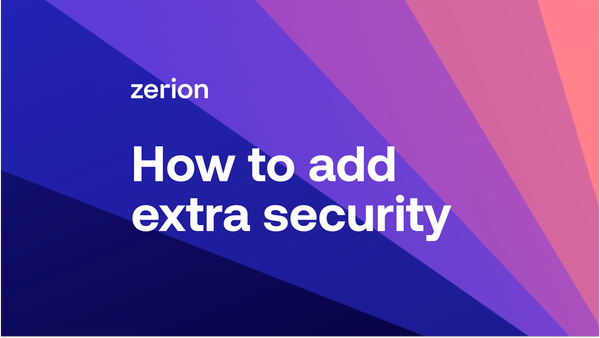Zerion Wallet is the safest and easiest Ethereum wallet for everything onchain. And you can make it even safer by using a cold wallet like Ledger. In this blog, we will explain the differences between cold and hot wallets, look into Ledger, and learn how to use it with Zerion.
How to store seed phrase: hot vs cold wallet
There are two types of self-custodial wallets:
- Hot wallet — a software wallet that stores private keys and connects directly to the internet
- Cold wallet — usually a hardware wallet that stores private keys on a separate device and stays offline
A hot wallet is great for doing anything onchain when you need to move fast. However, it is riskier because the device is always online, and attackers can potentially get hold of your private keys through malware.
Zerion Wallet is a hot wallet that takes security seriously. For example, Zerion can identify malicious websites and warn you. It also runs a simulation before you sign anything, helping you to understand what a transaction does. Together, these features help you avoid crypto phishing and wallet drainers.
However, there could be vulnerabilities at the browser or operation system level.
That’s where a cold wallet comes in handy. It stores your keys on a separate hardware device and never connects online.
Which one is better? None, you need both for different situations:
- Hot wallet for moving fast and doing things onchain
- Cold wallet for passively storing large amounts of crypto
You can also use both types of wallets with Zerion and Ledger Ethereum wallet.
What is Ledger?
Ledger is a hardware wallet that stores your private keys on a separate device.
Ledger can store thousands of different coins and can connect to computers and mobile devices via USB and Bluetooth.
Importantly, Ledger generates your seed phrase on its hardware, not your phone or desktop. This adds another layer of security. However, this means you should never export your private keys from Ledger. And you should not import your Ledger seed phrase into another wallet.
Instead, you can use Zerion and Ledger together:
- Generate and store private keys on Ledger
- Connect your Ledger to dapps and sign transactions with Zerion
Connect Ledger to Zerion Wallet
The video below shows how you can connect Ledger to Zerion Wallet on iOS — the process is similar for Android phones and the Zerion browser extension.
Connecting Ledger to Zerion will let you sign transactions, swap, mint, and do anything else onchain.
You can also just keep long-term crypto holdings on Ledger and add it as ‘watched wallet’ to Zerion for portfolio tracking.
To sum up
In this post, we’ve briefly explored the difference between hot and cold wallets. We’ve looked at Ledger and how you can use it together with Zerion.
Now, it’s time to put this into practice and keep your crypto safe.

